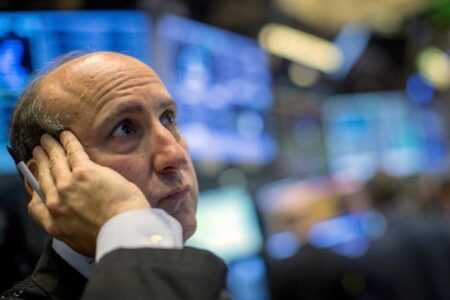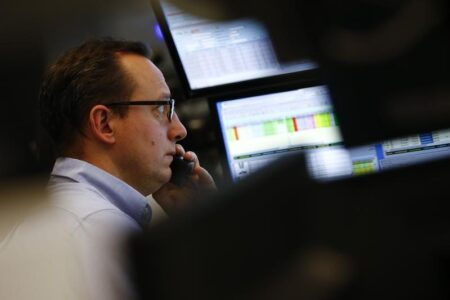What’s the biggest risk investors face in the stock market? Depending on who you talk to, it could be anything from geopolitical conflicts to the general mood of consumers in your district. It might even be the interest rates.
However, according to Warren Buffett, the biggest risk is relatively simple: short-term thinking.
Don’t miss
“Stocks are safe for the long-run and they’re very unsafe for tomorrow,” the legendary investor and Berkshire Hathaway CEO told CNBC a few years ago.
Here’s why the Oracle of Omaha resists the temptation to get caught up in near-term outlooks.
Short-term volatility
Buffett’s philosophy was shaped by Benjamin Graham, his mentor at Columbia University. Graham once explained that market dynamics look completely different based on the time horizon, which Buffett reiterated in his 1993 letter to Berkshire Hathaway shareholders:
“In the short-run, the market is a voting machine — reflecting a voter-registration test that requires only money, not intelligence or emotional stability — but in the long-run, the market is a weighing machine.”
In other words, the stock price you see today, or even tomorrow, is less likely to be based on facts and more likely to be based on investor sentiments in that moment.
Researchers have found a correlation between social media discussions of a stock and its performance in the short-term.
A study published in the International Review of Financial Analysis found that increased social media chatter can influence not only the price, but also the volatility, of a stock in the short-term. The study also found that social media may cause “intense risk transmission during a systemic crisis.”
This noise is difficult to predict, which means short-term prices and volatility are also unpredictable. “If you think you can jump in and out or that you know the time to come in, I think you’re making a mistake,” Buffett said in his 2017 CNBC interview.
Instead of trying to do the impossible, Buffett prefers to tune out the noise and simply focus on the long-term prospects of the underlying business.
Read more: Jeff Bezos and Oprah Winfrey invest in this asset to keep their wealth safe — you may want to do the same in 2024
Long-term prospects
Buffett rarely makes short-term predictions, but he’s been remarkably candid and confident in his long-term thesis. “American business is going to be worth more time,” he said. “Are [American businesses] going to be worth more 10, 20 or 30 years from now? Of course they are.”
This isn’t the first time Buffett has made an aggressive long-term prediction. In 2008, at the height of the financial crisis, he wrote an opinion piece for the New York Times to assuage concerns about the American economy. “These businesses will indeed suffer earnings hiccups, as they always have,” he wrote in the column. “But most major companies will be setting new profit records 5, 10 and 20 years from now.”
Similarly, in 2017, he predicted that the Dow Jones Industrial Average would be “over 1 million” in 100 years.
Buffett isn’t the only successful entrepreneur making 100-year predictions with confidence. Jeff Bezos has constructed a 10,000-year mechanical clock in West Texas as a symbol of the power of long-term thinking.
“Long-term thinking is a lever. It lets you do things that you could not do or couldn’t even conceive of doing if you were thinking short term,” he said.
Leveraging long-term trends could be powerful for your investment process, too. Retail investors can ignore all the noise about short-term volatility, wars, election cycles and economic data to focus on the prospects of individual businesses and the long-term prospects for certain industries.
For instance, Deloitte expects generative artificial intelligence (AI) could represent half of the value of all semiconductors sold by 2027.
Meanwhile, S&P Global forecasts $700 billion per year of renewable energy investment by 2050, while Morgan Stanley expects America’s rapidly aging population to propel health care costs over the next few decades.
Investors picking stocks in these sectors could benefit from long-term tailwinds that make short-term concerns immaterial.
What to read next
This article provides information only and should not be construed as advice. It is provided without warranty of any kind.
Read the full article here
















